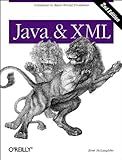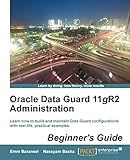Best XML Parsing Tools for Golang to Buy in December 2025

XML Programming Using the Microsoft XML Parser
- AFFORDABLE PRICES: SAVE MONEY ON QUALITY USED BOOKS.
- ENVIRONMENTALLY FRIENDLY: SUPPORT RECYCLING AND SUSTAINABILITY.
- RELIABLE QUALITY: EACH BOOK INSPECTED FOR GOOD CONDITION.



Java & XML, 2nd Edition: Solutions to Real-World Problems



Instant Nokogiri



Learning Python for Forensics



Oracle Data Guard 11gR2 Administration Beginner's Guide


In Golang, unmarshaling XML involves converting XML data into a structured format in memory, such as a struct. To unmarshal XML in Golang, you can follow these steps:
- Define a struct that represents the structure of the XML data you want to unmarshal.
- Import the necessary packages: encoding/xml and any other packages required for your program.
- Open the XML file or retrieve the XML data from a source.
- Create an instance of the struct you defined earlier. This instance will hold the converted XML data.
- Use the xml.Unmarshal() function to parse the XML data and unmarshal it into the struct instance.
- Handle any errors that occur during the unmarshaling process.
- Once unmarshaling is successful, you can access and use the unmarshaled data as per your requirements.
That's the basic process of unmarshaling XML in Golang. It allows you to convert XML data into a more usable and structured format for further processing in your program.
How to unmarshal XML into a slice in Golang?
To unmarshal XML into a slice in Golang, you need to define a struct that represents the XML structure and use the encoding/xml package.
Here's an example of how to unmarshal XML into a slice:
- Define the struct that represents the XML structure. Each field should be tagged with xml:"tag_name" to specify the XML tag name.
type Person struct { Name string `xml:"name"` Age int `xml:"age"` Email string `xml:"email"` }
type People struct { People []Person `xml:"person"` }
- Read the XML file into a byte slice or use any other method to obtain the XML content.
- Unmarshal the XML into the slice.
content := []byte(``) var people People xml.Unmarshal(content, &people)
The Unmarshal function takes two parameters: the input XML content and a pointer to the variable where the unmarshaled data will be stored. In this case, the People struct is passed as a pointer to store the unmarshaled data.
After unmarshaling, the XML content will be converted into a slice of Person structs, and you can access individual fields like people.People[0].Name or loop through the slice to perform further operations.
What is the purpose of XML unmarshalling in Golang?
The purpose of XML unmarshalling in Golang is to convert (or deserialize) an XML document or data into a structured form that can be used in a programming language. In Golang, the XML unmarshalling process allows developers to map XML elements and attributes to corresponding Go types and structures, making it easier to work with XML data in their applications.
By unmarshalling XML, developers can access and manipulate the XML data using Go's native data types and structures, such as structs and slices, instead of dealing with the raw XML format. This helps to simplify XML processing and enables developers to parse, query, and interact with XML data more effectively in their Go programs.
What is the Unmarshal function in the encoding/xml package of Golang?
The Unmarshal function in the encoding/xml package of Golang is used to convert XML data into Go values. It takes an input buffer of XML data and a pointer to the destination Go value as arguments, and then populates the Go value with data from the XML.
The function requires the Go value to be a struct or a pointer to a struct, and it uses reflection to match the XML tags with the corresponding fields in the struct. It automatically converts XML elements and attributes into the corresponding Go values, based on the struct field types and tags.
Here's an example of how the Unmarshal function is used:
type Person struct { Name string `xml:"name"` Email string `xml:"email"` }
xmlData := ` John Doe john@example.com `
var person Person err := xml.Unmarshal([]byte(xmlData), &person) if err != nil { fmt.Println("Error:", err) return }
fmt.Println("Name:", person.Name) fmt.Println("Email:", person.Email)
In this example, the XML data is unmarshalled into the person variable, which is a struct with two fields (Name and Email). The xml tags on the struct fields specify the corresponding XML elements to be mapped. The Unmarshal function reads the XML data and assigns the values to the fields of the person struct.
What is the difference between XML unmarshalling and decoding in Golang?
XML unmarshalling and decoding are both processes used in Golang to convert XML data into a structured format that can be easily manipulated and used in the code. However, there are some differences between these two concepts:
- XML Unmarshalling: XML unmarshalling refers to the process of converting XML data into Go objects or structs. It involves parsing XML and mapping XML elements and attributes to the corresponding fields in the Go objects. The unmarshalling process takes care of converting the XML data into the appropriate Go data types. In Golang, the encoding/xml package provides functionalities for XML unmarshalling.
- Decoding: The decoding process generally refers to the conversion of binary or encoded data into its original format. In the context of Golang, decoding can involve various formats such as encoding binary data, encoding JSON, or encoding XML. Decoding XML specifically means reading XML data and converting it into a structured format like Go objects or structs. It may involve similar steps as XML unmarshalling, but decoding can also be used to handle other data formats.
In summary, XML unmarshalling specifically deals with converting XML data into Go objects or structs, while decoding is a more generalized term that can be used for other data formats in addition to XML.
What is the xml.Marshaler interface in Golang?
The xml.Marshaler interface is a part of the Go standard library's encoding/xml package. It is used to define the behavior of types that can marshal themselves into XML representation.
The interface, xml.Marshaler, has a single method:
type Marshaler interface { MarshalXML(e *xml.Encoder, start xml.StartElement) error }
A type that implements the MarshalXML method can customize how it is marshaled into XML. It receives an xml.Encoder and an xml.StartElement as parameters, and it is responsible for encoding itself into XML using the provided Encoder.
By implementing this interface, a type can control the XML representation of itself, giving more flexibility and customization options when encoding to XML using the xml.Marshal or xml.MarshalIndent functions.
Here's an example of a type implementing the MarshalXML method:
type Person struct { Name string Age int }
func (p Person) MarshalXML(e *xml.Encoder, start xml.StartElement) error { err := e.EncodeElement(p.Name, xml.StartElement{Name: xml.Name{Local: "Name"}}) if err != nil { return err }
err = e.EncodeElement(p.Age, xml.StartElement{Name: xml.Name{Local: "Age"}})
if err != nil {
return err
}
return nil
}
In this example, the Person type implements the MarshalXML method to control how it is encoded into XML. It encodes the Name field as "Name" element and the Age field as "Age" element.
When using xml.Marshal or xml.MarshalIndent to encode a Person value to XML, the MarshalXML method of the Person type will be called to perform the custom encoding logic.
What is the role of the xml.Marshal function in Golang?
The xml.Marshal function in Golang is used to convert a Go value to its corresponding XML representation. It takes a Go value as input and produces XML data as output.
This function is commonly used to serialize Go structs or values into XML format, making it easier to transmit or store data in an XML-based system. It automatically maps Go data types to their XML equivalents, generating XML elements, attributes, and values accordingly.
The xml.Marshal function uses reflection to examine the structure of a Go value and determines how to convert it into XML. It tags the struct fields with xml tags to specify XML element names, attributes, and other properties. Additionally, it handles special cases like nested struct fields, arrays, slices, and maps.
Here's a simple example of using xml.Marshal:
type Person struct { Name string `xml:"name"` Age int `xml:"age"` Email string `xml:"email,omitempty"` }
func main() { person := Person{"John Doe", 30, ""} xmlData, _ := xml.Marshal(person) fmt.Println(string(xmlData)) }
In this example, the xml.Marshal function converts the Person struct to an XML representation where each field is mapped to its respective XML element.
